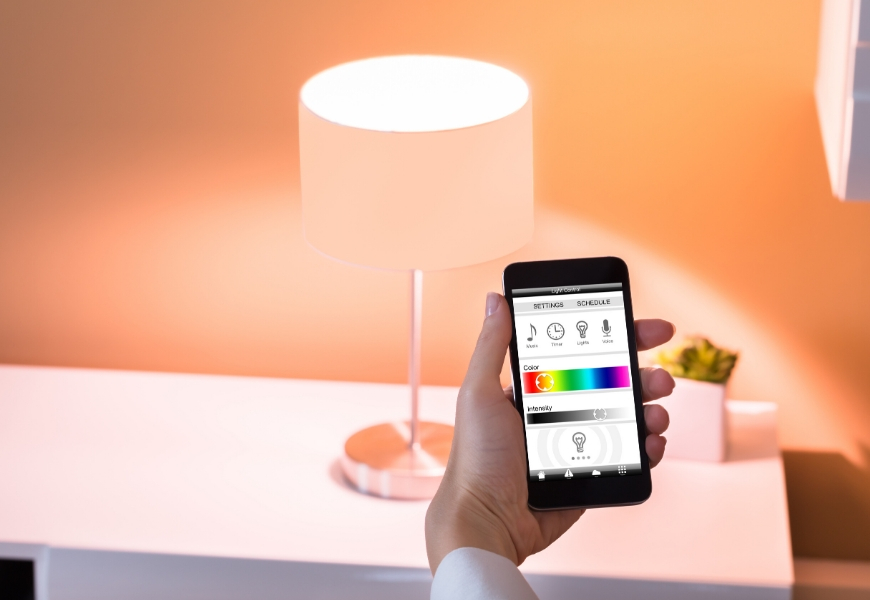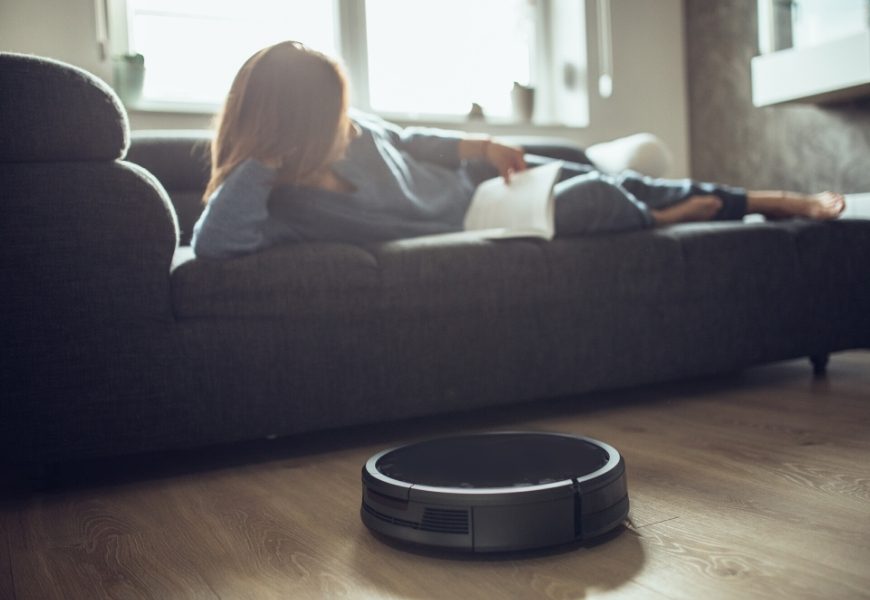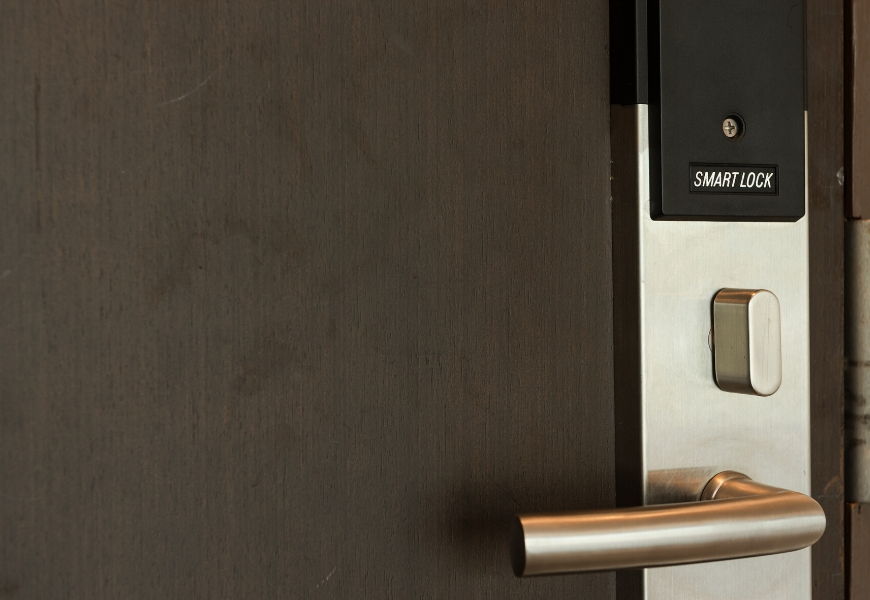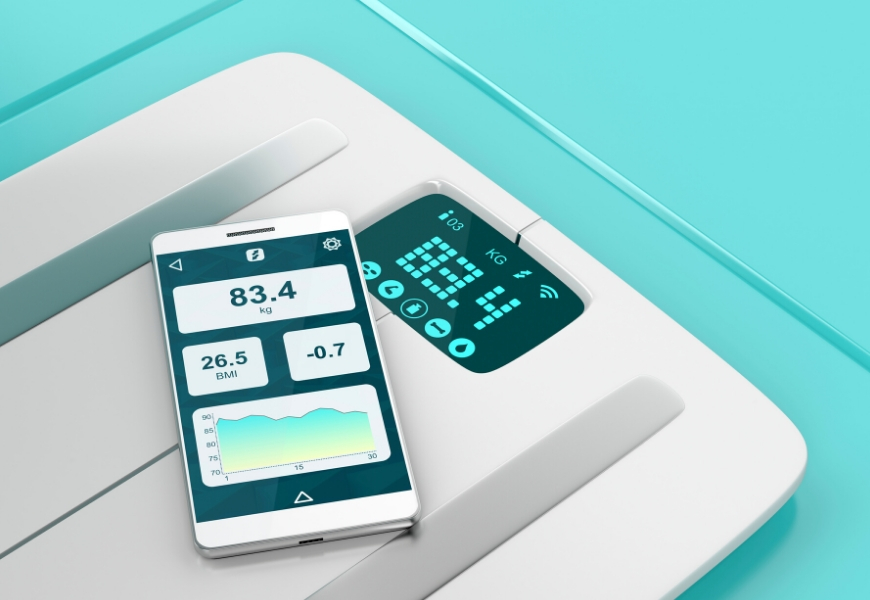Smartening up the everyday items at home
By 2021, it’s predicted that the average Australian household will boast more than 30 connected devices – a big leap from 2017’s average of 13-odd.
It may sound like a generous prediction, but those devices soon add up. Think smart gadgets for entertainment, productivity, and then the everyday items that, over time, have evolved from analog to digital.
It might be hard to imagine, but this is the online world Australians can look forward to – and experience – on the back of fast broadband.
From analog to digital
As the nbn™ broadband access network nears completion of its volume rollout^, we also edge closer to living in smart homes that make us more productive and turn previously analog tasks digital.
It’s something bound to become more commonplace given the rise of the Internet of Things (IoT), which has experienced huge growth in recent years.
In simple terms, IoT covers any device that was once idle but can now connect to the internet. And it’s already a $1.1 billion industry here in Australia.

Thanks to their ability to go online, these everyday items can be controlled remotely, customised to the user’s needs, and continually improved through real-time updates.
Yet, having so many devices connected to a local network soon adds up bandwidth-wise – which is where services over the nbn™ access network come in.* Just one of the many benefits of connecting, fast broadband is helping to support the smart homes of today and tomorrow.
Here’s how some of the once-were-analog-now-are-digital devices may benefit your home.
Keeping cool and heating up
Being able to access connected devices remotely to turn them off and on is not only convenient, it can save your hip pocket too.
There are many connected options for much of today’s modern technology – from toasters and coffee machines, through to lighting and security cameras. Then there’s the major appliances that can also have some seriously smart perks.
Over the hot Australian summer, for instance, a smart air conditioner can be a huge boon.
Sygnal’s smart air-conditioning system lets you set up sensors in rooms throughout your home that read and display temperature information (on a website). You can then turn your air-con off and on, and set temperatures remotely, allowing you to arrive home to personalised cool conditions. Sygnal can also be used to alter airflow speeds to each room based on how close the room is to the right temperature, potentially saving you dollars on your power bill.

As for turning up the heat, the recent range of Samsung ovens are proving pretty smart – they can be accessed remotely via your smartphone, giving you full control of all the main features. One of the handiest is being able to set a temperature to preheat the oven before you get home. You can also remotely change the temperature, set timers, turn the oven off and more.
For cleaning up messes around the home, there’s a handy range of smart robotic vacuum cleaners. The easy part is turning them on and off via smartphone app… but wait, there’s more!
Smart robotic vacuums can also improve themselves by mapping your home, can be steered via smartphone video feed (handy if it gets stuck or just for fun) and can even be controlled by voice commands. Companies like iRobot offer a range of smart robot vacuums and even smart robot mops.
Smartening the simple things
Even a seemingly minor part of your everyday life can be improved through fast broadband connectivity, giving you more time to spend on the important things in life.
For example, the humble doorbell is not-so-humble anymore thanks to its modern smarts.
Smart doorbells, such as the August Cam Pro, let you see who’s at your front door, even if you’re not home. The device connects to an app, allowing for two-way video and audio communication. You can also get motion-detection notifications and pair it with a smart lock, like the August Smart Lock Pro, so you can open the door remotely if a friend or family member arrives in your absence.

The scales in your home have also had a smart makeover.
In the kitchen, the days of using weights and balance scales to measure recipe ingredients are well and truly gone with a wide array of smart food scales on the market. Smart features across different models include built-in databases of nutritional info, step-by-step recipe instructions, and the ability to connect to fitness apps via Bluetooth and Wi-Fi technology.
Then there’s the smart bathroom scales cleverly connecting to the internet to help support good health. The Withings Body+ Body Composition Wi-Fi Scale, for example, pairs with more than 100 health and fitness apps to track data including fat mass, muscle mass and water percentage. It can also automatically recognise up to 8 different users and, handily, provides a daily local weather forecast!

And another simple home pleasure that’s being transformed with a little help from connectivity is one of Australia’s favourite pastimes: the barbeque.
From barbies with all the bells and Wi-Fi whistles, like the Timberline 1300 Pellet Grill that – among other delicious things – lets you monitor and change temperature, smoke levels and set timers; to connected thermometers, like the Weber iGrill 2, that lets you track ‘doneness levels’ on your phone from up to 45 metres away; to automatic BBQ cleaners – yes, you read that correctly – such as the Grillbot Automatic Grill Cleaning Robot, connectivity sure is helping to put the smart in sausage sizzles.

How to optimise your set-up at home
^ NBN Co’s build completion commitment is that all standard installation premises in Australia are able to connect to the nbn™ access network as at the build completion date. This excludes premises in future new developments which will be an ongoing activity for NBN Co beyond the build completion date. It also excludes a small proportion of premises defined as ‘complex connections’ – which includes properties that are difficult to access, culturally significant areas and heritage sites – where connection depends on factors outside of NBN Co’s control such as permission from traditional owners, and where network construction to allow such premises to connect will be an ongoing activity of NBN Co beyond the build completion date.
* An end customer’s experience, including the speeds actually achieved over the nbn™ broadband access network, depends on the nbn™ access network technology and configuration over which services are delivered to their premises, whether they are using the internet during the busy period, and some factors outside of nbn’s control (like their equipment quality, software, chosen broadband plan, signal reception, or how their provider designs its network). Speeds may also be impacted by the number of concurrent users on the nbn™ Fixed Wireless network, including during busy periods. Sky Muster™ satellite end customers may also experience latency.


